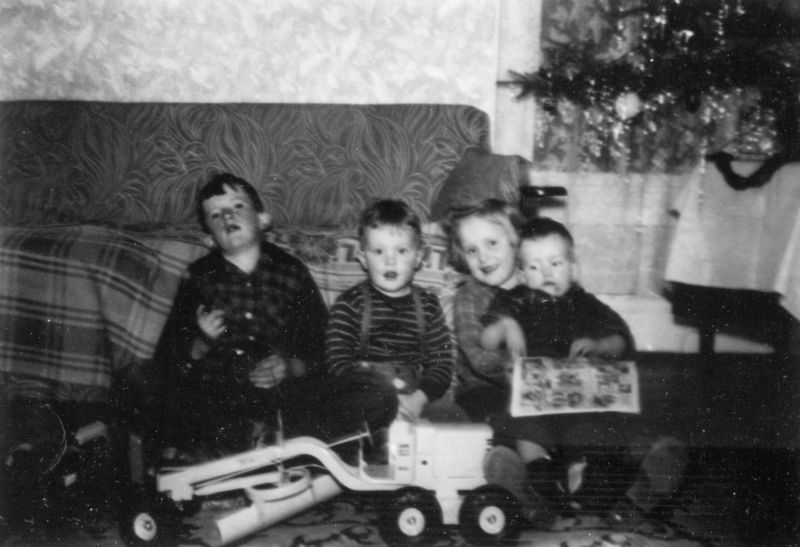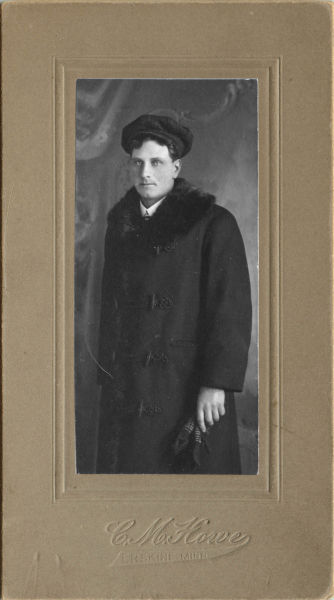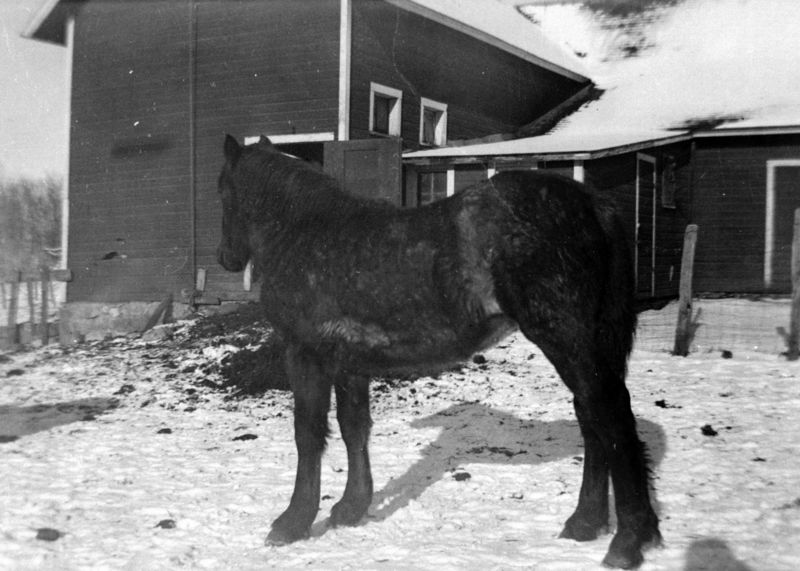Froggy The Gremlin's Christmas, 1940s.
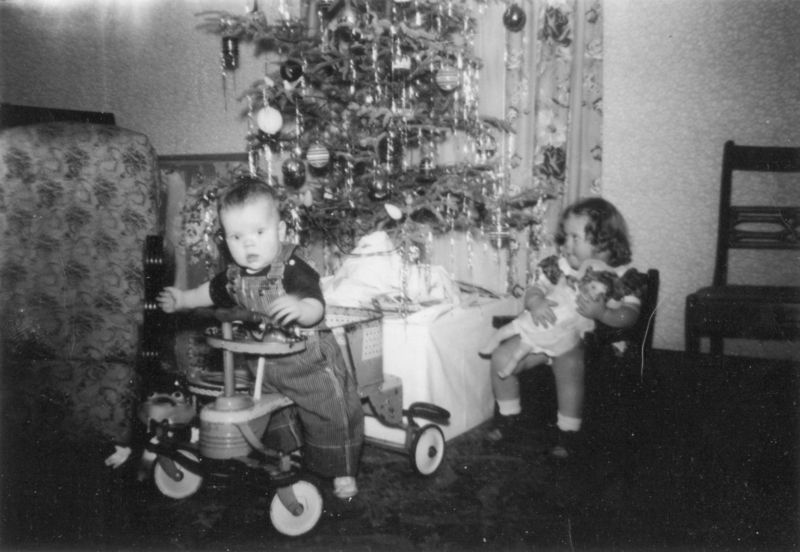
Two toddlers near the Christmas tree. Those bug-eyes and wide-open mouth on the floor, near the boy in the walker? That is Froggy the Gremlin,a children's program character during the days of radio on NBC, and briefly moving to television in the 50s. The toy was produced by Rempel starting in 1948, which dates this photo to the late 1940s.
Labels: 1940s, 1948, christmas, christmas tree, rubber toy
Merry Christmas, early 1960s.
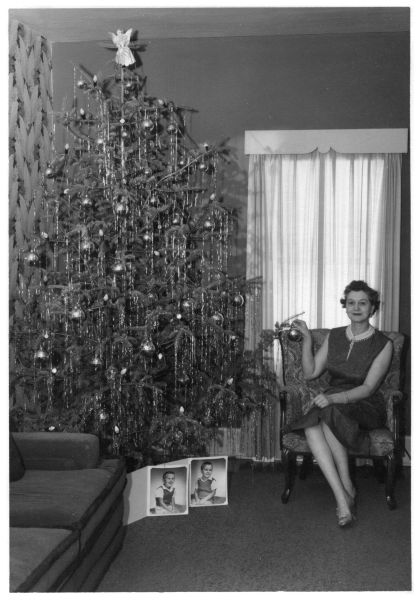
A woman holding a Christmas ornament, sitting next to two photos of children. Appears 1950s, or early 1960s.
Labels: 1960s, christmas, christmas tree
Minnesota's Christmas Tree, 1961.
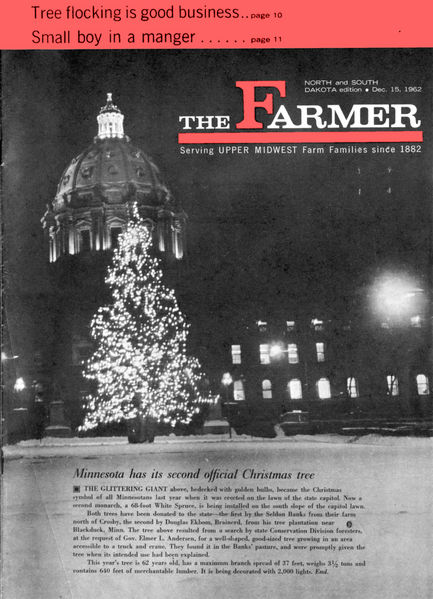
In 1961, new governor Elmer Andersen sent his finest tree-experts to find a grand tree, an amazing tree, a tree that was big and accessible to crane, to place on the State Capital lawn. The tree was found in the pasture of Seldon Banks, who donated it to the state. The image above is of Andersen's first official Minnesota Christmas Tree, from the year before; the misleading caption referring to the "Second tree" in the article is the 1962 tree that was erected before The Farmer could get a photo for their cover.
Labels: 1960s, 1961, 1962, christmas, christmas tree, Elmer Andersen, minnesota history
Plains Farmstead In Winter, 1920s.
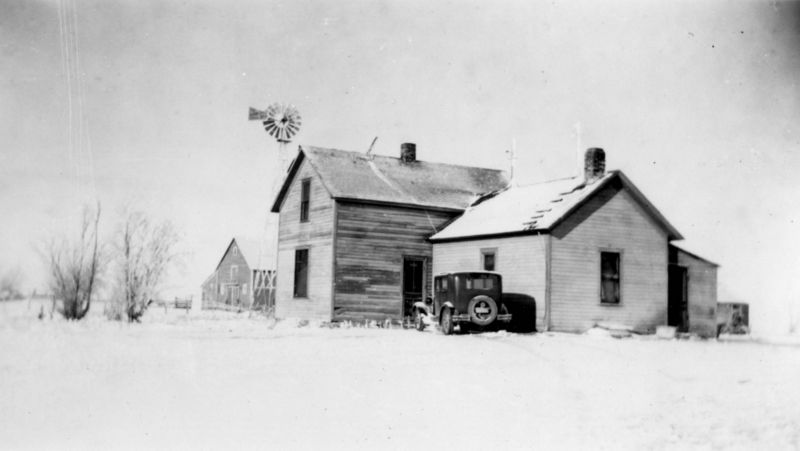
A plains farmstead in the middle of winter, Model T parked outside. 1920s.
Labels: 1920s, early 20th century farm photos, farm life, model t, winter
Pipe Gang, 1937.
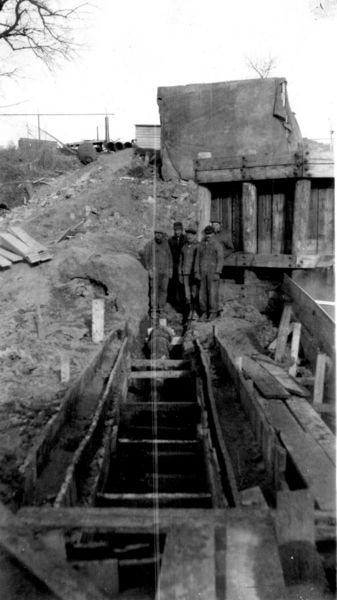
The "Pipe Gang" (closeup here), during construction of the West Fargo Armour Meat packing plant sewage treatment system, taken December 4, 1937.
Labels: 1930s, 1937, armour meat packing plant, fargophilia, west fargo
Untitled Halsman, 1947.
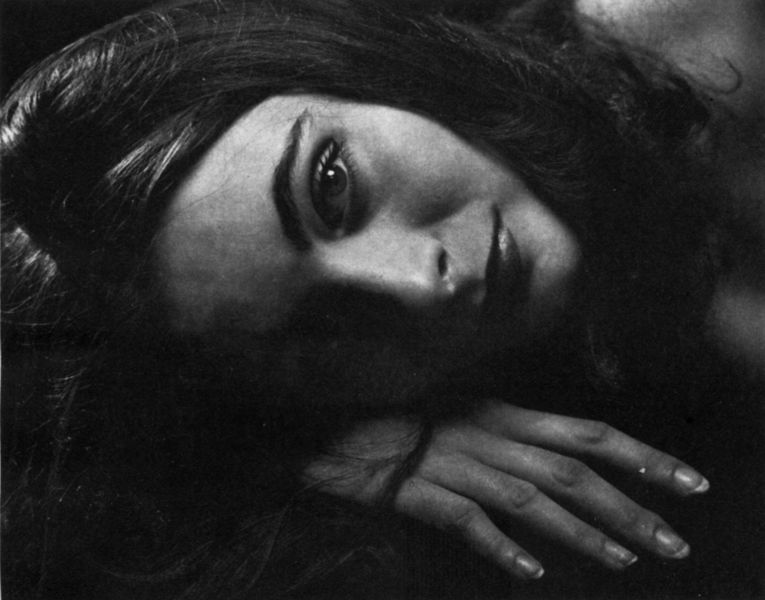
This photo appeared in The Photographer's Workshop in 1951, but the caption explains it was taken 4 years earlier when the young lady, a professional ballerina, was just 17 years old. The model is "Ricky" Soma, better known as Enrica Soma. In the gap between when the photo was taken and when it appeared in this magazine, the young ballerina had graced the cover of Life (also by Halsman, and probably taken the same time as the one above), married and separated from filmmaker John Houston, and, around the time this magazine was hitting newsstands, Soma was giving birth to actress Angelica Houston. Photo by Philippe Halsman.
Labels: 1940s, 1947, 1950s, 1951, ballet, enrica soma, Philippe Halsman
Cinerama-70 in Fargo
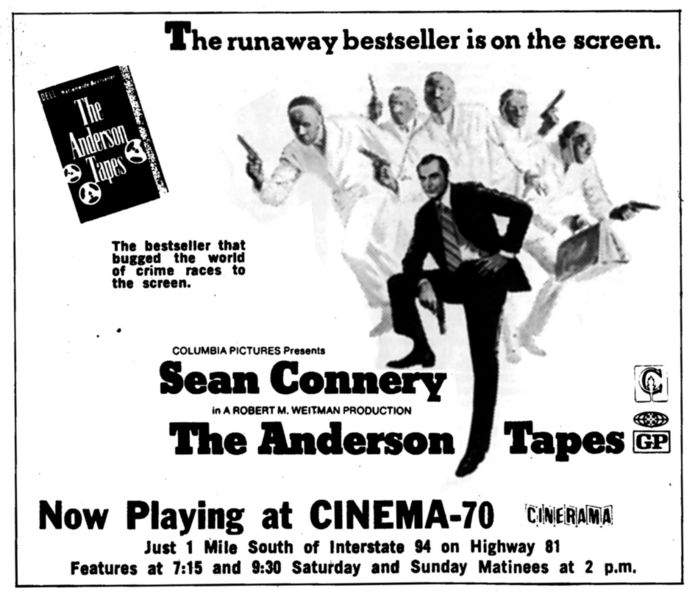
I don't remember the Cinema-70, but by the time I was old enough to become a moviegoer it had changed to a 3-screen, 35mm multiplex like all the rest in town, where I had to sit on my mom's lap for Return of the Jedi because it was so full. The theatre closed shortly after, and sat vacant for a decade, until it was torn down and turned into a parking lot for the gym next door.
In 1971, however, it was a single-screen "Cinerama 70" theatre. In the 1960s, whoever built the theatre banked on the belief that Cinerama, the wide-aspect-ratio film style popularized in the late 50s and early 60s, would be there to stay. By the 1970s Cinerama was rarely used, few studios even had equipment to film in it, and it had been bastardized from the original 3-camera setup to an anamorphic widescreen format. The Anderson Tapes was filmed on standard 35mm film with a normal aspect ratio, which left over half of a Cinerama screen unused. It's no wonder the theatre broke up their one-room schoolhouse into a three-screen theatre.
On the right-hand side of the ad, it looks like a typo, but not really: 1971 was in some of the early years of the MPAA's voluntary film rating system. "GP" was the replacement for the "M" rating, when people found the "M" and "R" ratings too hard to tell apart. "GP" meant, essentially, what "PG" means today, but too many people thought it meant "general public", thus confusing it with the "G" rating. There was just a narrow 2-year window when "GP" was used.
Labels: 1970s, 1971, cinerama, fargophilia, movie theatre











